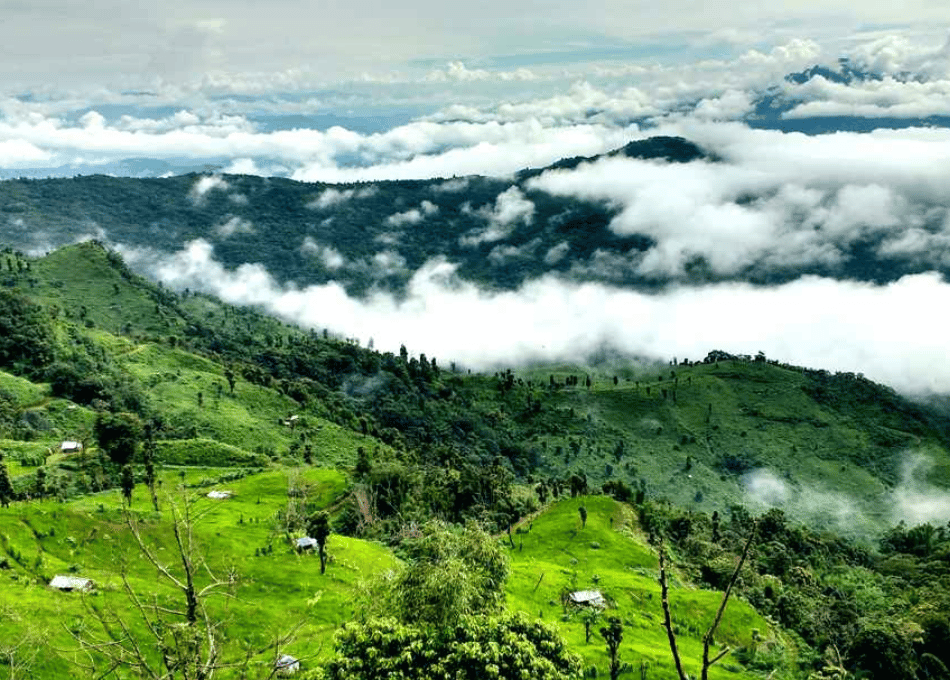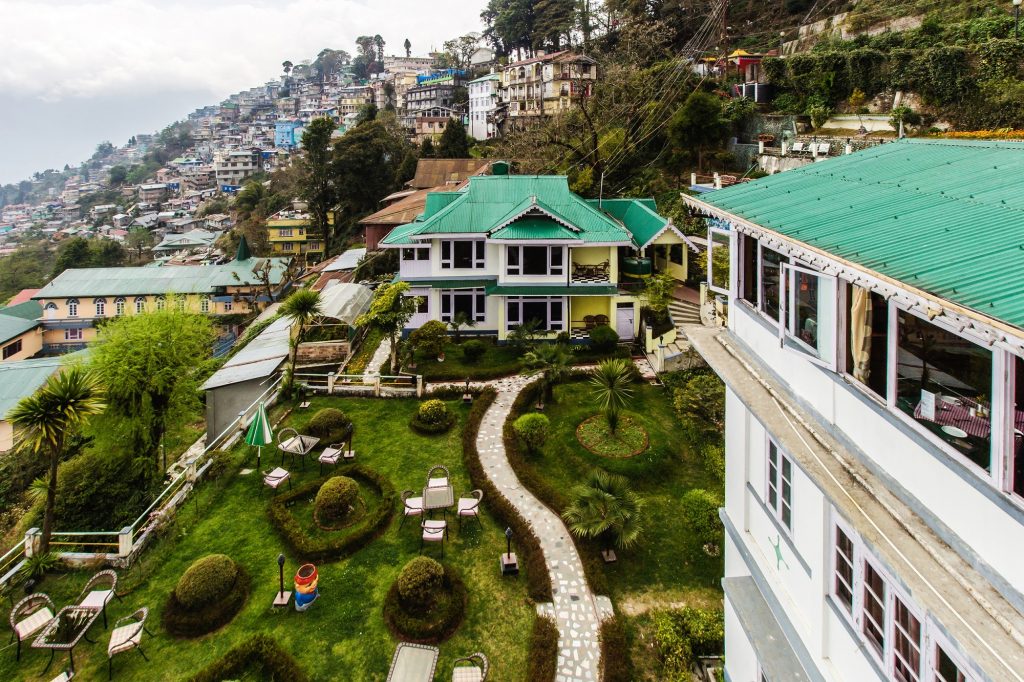4 Night 5 Days View offer details
4N/5D accommodation Stay valid all days except peak season. Half day city tour Paying for food Is compulsory and it includes unlimited dinner and breakfast. 7 days prior booking should be confirmed
Validity : All Day
6 Nights 7 Days View offer details
6N/7D accommodation Stay valid all days except peak season. Half day city tour Paying for food Is compulsory and it includes unlimited dinner and breakfast. 7 days prior booking should be confirmed.
Validity : All Days
No OFFER AVILABLE AT THIS TIME.
........
- Overviews
- Amenities
- FAQ
Nagaland is almost entirely inhabited by the Naga tribes except some Kukis, Kacharis, Garos, Mikris, Benglalees, and Assamese etc. in the plains sector. There are several views expressed by scholars regarding the origin of the word Naga. Some believe that the word Naga has evolved from the Sanskrit word Nagna which means naked. It is so because the Nagas are proverbially known by the paucity of their clothes. Another view is that the word Naga originated from Naga meaning Snake or king of snakes. Mythlogically, princess Ulupi was a Naga Kanya, that is daughter of the king of snakes. Ulupi’s residence is generally identified in the south-west of Nagaland. Since this area was under the Naga raj, the people are known as Naga.
Originally, the Nagas were not known by the names of the tribes as they are known now, but by the name of a group of villages. Gradually they have settled down to the tribe names as are found now, but still then the process of amalgamation or separation is still going on. According to the census report, there are 16 Naga tribes and four non-Naga tribes inhabiting Nagaland. The sixteen Naga tribes include Ao, Konyak, Sema, Chakhesang, Angami, Lotha, Sangtam, Phom, Chang, Kheimungan, Yimchunger, Zeilang, Rengma, Tikhir, Mokware, and Chirr. The four non-Naga tribes include Kuki, Kachari, Garo, Mikir.
1. Pickup and Drop-off Services
- Airport/Railway Station Transfers
2. Local Transportation
- Sightseeing in Sedan Car
3.. Accommodation
- Hotels
4. Meals
- Daily Breakfast
- Lunch or Dinner
5. Tour Guide
- Professional Guides
- Language Options
6. Sightseeing Tours
- Itinerary
7. Cultural Experiences
- Local Performances
8. Assistance and Support
- 24/7 Assistance
Frequently Asked Questions?
-
12. What are the local languages spoken in Nagaland?
The primary languages spoken in Nagaland are English (the official language), Nagamese (a creole language), and various tribal languages such as Ao, Angami, Sumi, Lotha, and Konyak. English is widely understood and spoken, especially in urban areas and tourist spots.
-
10. What kind of transportation is available within Nagaland?
Private Taxis: Common and convenient for traveling between towns and attractions. Shared Taxis: Economical option for local travel. Buses: Available but may be less frequent and slower. Rental Cars: Available for those who prefer self-driving (ensure you have a valid driving license).
-
9. What is the local cuisine like in Nagaland?
Nagaland's cuisine includes a variety of local dishes such as smoked pork, bamboo shoot, axone (fermented soybeans), anishi (dried colocasia stems), and a variety of vegetables and meats. Both vegetarian and non-vegetarian options are available, often accompanied by rice. The food is known for its use of spices and unique flavors.
-
8. Is Nagaland safe for tourists?
Nagaland is generally safe for tourists. However, it is advisable to follow standard travel precautions such as not venturing into unknown areas alone at night, keeping valuables secure, and being aware of your surroundings. It is also recommended to check for any travel advisories before your trip.
-
7. What should I pack for a trip to Nagaland?
Comfortable clothing suitable for varying weather conditions Warm clothing for higher altitudes and cooler months Rain gear (especially if visiting during the monsoon season) Sturdy walking shoes or trekking boots Personal medications and a basic first aid kit Camera and binoculars for bird watching and sightseeing Sunscreen, sunglasses, and hats A reusable water bottle
-
6. Do I need a tour guide?
While you can explore Nagaland independently, having a local tour guide can greatly enhance your experience by providing insights into the culture, history, and hidden gems of the region. Guides are particularly helpful for trekking, exploring remote villages, and understanding local customs.
-
5. What activities can I do in Nagaland?
Nagaland offers a variety of activities, such as: Trekking (Dzükou Valley, Japfu Peak) Cultural experiences (Hornbill Festival, visiting tribal villages) Exploring historical sites (war cemeteries, ancient ruins) Nature walks and bird watching Shopping for local handicrafts and artifacts
-
3. What kind of accommodations are available in Nagaland?
Nagaland offers a range of accommodations, including: Hotels (3-star to 5-star) Resorts Homestays Guesthouses Budget-friendly lodges
-
1. What is the best time to visit Nagaland?
The best time to visit Nagaland is between October and May. The weather is pleasant during these months, and you can experience the Hornbill Festival in December, which showcases the rich culture and traditions of Nagaland.
-
2. How do I reach Nagaland?
By Air: The nearest airport is Dimapur Airport, which has flights connecting to major cities like Kolkata and Guwahati. By Rail: Dimapur Railway Station is the main railhead in Nagaland, with trains from various parts of the country. By Road: Nagaland is well-connected by road with neighboring states like Assam and Manipur. Regular bus services and private taxis are available.
-
4. What are the must-visit places in Nagaland?
Some of the must-visit places in Nagaland include: Kohima: The capital city with attractions like Kohima War Cemetery, State Museum, and Kisama Heritage Village. Dimapur: Known for its ancient ruins, markets, and Chumukedima Village. Mokokchung: Famous for Longkhum Village and Mopungchuket Village. Mon: Home to the Konyak tribe and Longwa Village. Khonoma: Asia’s first green village known for its conservation practices.
-
11. Is there internet and mobile connectivity in Nagaland?
Major towns and tourist areas generally have good mobile connectivity and internet access. However, connectivity may be limited in remote areas and during trekking or village visits.


